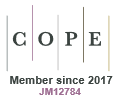Just Accepted
This article has been peer reviewed and accepted for publication. It is in production and has not been edited, so may differ from the final published form.
How different strategies affect intramuscular fat deposition and marbling in meat: A meta-analysis on beef cattle
Abstract
Context. Intramuscular fat (IMF) deposition in meat is a multifactorial physiological process that is influenced by different feeding strategies and rearing practices. Aim. This meta-analysis investigated for the first time the effects of different strategies designed to increase and/or manage IMF deposition and marbling score (MS) in beef cattle. Methods. The dataset comprised 313 peer-reviewed publications. Strategies were assessed by examining the weighted mean difference (WMD) between control diets (without additives or specific strategies to increase MS or IMF) and treatments under different conditions, including feeding (nutritional) strategy, sex class, feeding system, management, and feed efficiency phenotype. Key results. Sex class (heifers or steers vs. bulls) and feeding system (feedlot vs. pasture) were associated with consistent increases in IMF and MS. Among the nutritional strategies, the inclusion of lipids, distillers grains (DG), and crude glycerin increased IMF and improved the fatty acid profile of beef. Significant increases in IMF were observed when comparing steers vs. bulls (33.65%; P < 0.001), heifers vs. bulls (79.30%; P < 0.001), and heifers vs. steers (51.33%; P < 0.001). Feedlot finishing increased IMF by 33.67% compared to pasture (P < 0.001). Additionally, dietary inclusion of lipid sources (4.08%; P = 0.001), DG (7.09%; P = 0.001), and crude glycerin (14.71%; P = 0.009), as well as vitamin A reduction (14.48%; P < 0.001), further enhanced IMF content. However, strategies such as β-agonists (P < 0.001) reduced IMF content, while the addition of vitamins D and E, zinc, selenium, exogenous enzymes, essential oils, or tannins had no significant effect. Analysis of residual feed intake (RFI) indicated that efficient animals (low RFI) did not differ from inefficient animals (medium/high RFI) in terms of IMF levels but had lower MS (P = 0.055). Conclusion. Feedlot finishing compared to pasture increased IMF and MS but reduced the concentrations of beneficial fatty acids such as rumenic acid (CLA C18:2 cis9, trans11) and omega-3 in meat. Among the nutritional strategies, the inclusion of lipids or DG improved the fatty acid profile of beef by increasing rumenic acid and α-linolenic acid content. Implications. The different feeding and rearing strategies do not only affect IMF deposition but also the fatty acid profile of beef.
AN25052 Accepted 09 October 2025
© CSIRO 2025



